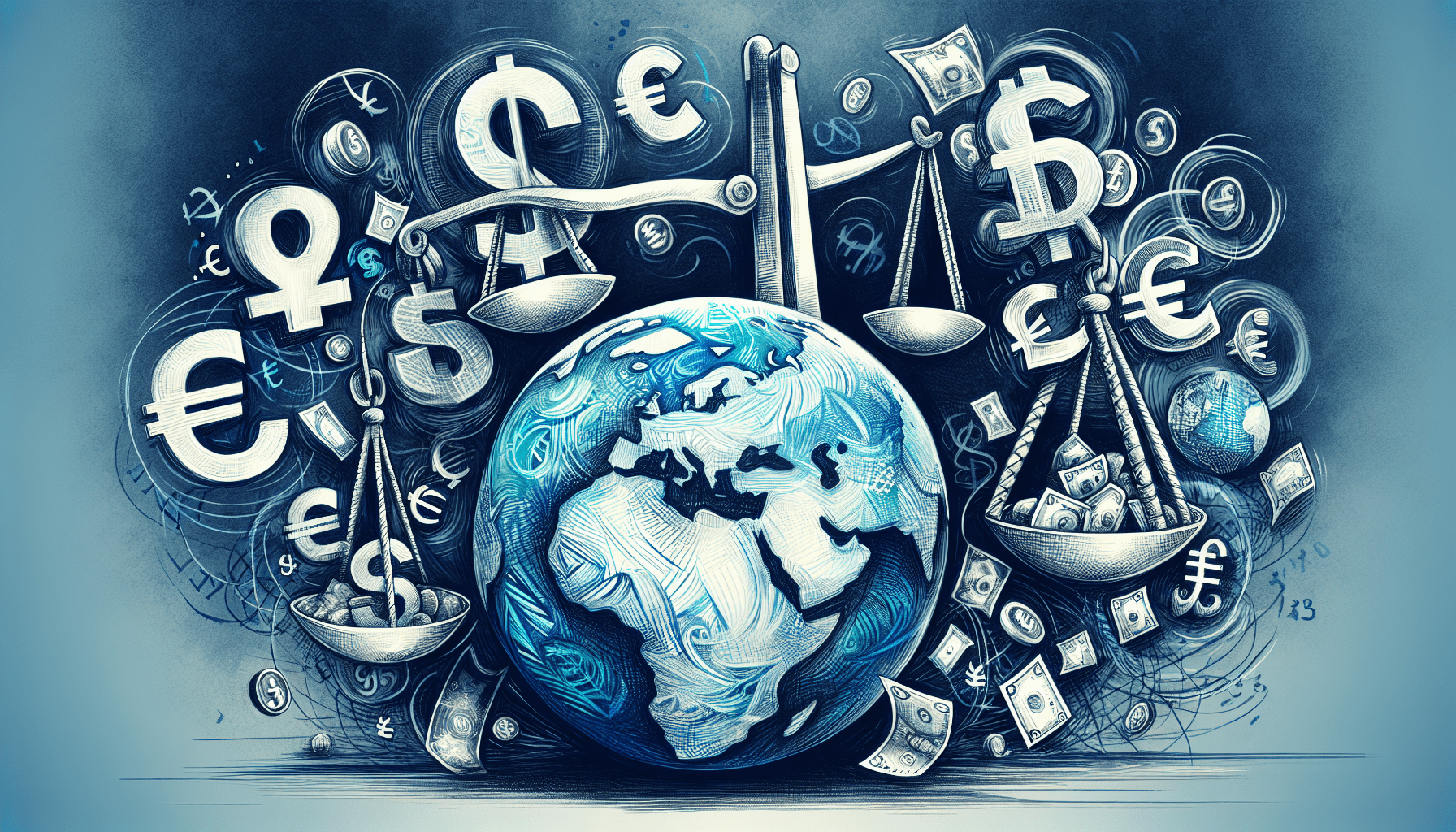Ready to find out who holds the keys to the kingdom? In a financial landscape as vast as the United States, it’s worth pondering, who exactly owns the most US debt? From powerful nations to everyday citizens, the answer might surprise you. Strap in as we uncover the true owners of America’s debt and unpack the implications of this global economic jigsaw puzzle. Get ready to embark on a journey that will shed light on this fascinating aspect of the modern financial landscape.

Understanding US Debt
In order to grasp the complexity of the US national debt, it is crucial to have a comprehensive understanding of what it entails and how it is accumulated. The US national debt refers to the total outstanding debt owed by the federal government of the United States. This debt is the result of the government’s borrowing to finance various expenditures, such as defense, infrastructure projects, and social welfare programs.
How the US accumulates debt
There are several ways in which the US accumulates debt. One major source is through the issuance of government bonds, which are essentially IOUs sold to investors. These bonds, known as Treasury bonds, are purchased by both individuals and institutions, as well as foreign governments. When these bonds mature, the US government pays back the principal amount plus interest.
Another contributing factor to the US debt is the substantial spending that exceeds revenue, resulting in budget deficits. This means that the government is consistently spending more money than it is taking in through taxes and other sources of income. These deficits are financed by borrowing, which adds to the national debt.
Components of US debt: public and intragovernmental
US debt is divided into two main components: public debt and intragovernmental debt. Public debt refers to the portion of the debt owed to external entities, such as investors and foreign governments. On the other hand, intragovernmental debt represents the debt that the US government owes to itself, primarily to government trust funds. These trust funds include programs such as Social Security and Medicare.
Debt Owned by the US Government
Within the umbrella of intragovernmental debt, various government agencies hold a significant portion of the US debt. These agencies purchase Treasury bonds as a means to invest their surplus funds. This practice allows these agencies to earn interest on their holdings while financing government activities.
For instance, the Social Security Trust Fund, which provides retirement benefits, holds a substantial amount of US debt. Additionally, other entities like federal pension funds and the Federal Reserve also own Treasury bonds. This interagency ownership creates a complex web of the US government’s obligations to itself.
The role and implications of intragovernmental debt are mostly internal, with limited impact on the overall economy. However, it is important to monitor these obligations to ensure that they can be fulfilled without jeopardizing public programs.

Debt Owned by US Individuals and Institutions
Treasury bonds play a crucial role in US debt ownership by individuals and institutions. These bonds are considered as a safe and reliable investment option. Retirement funds, such as pension plans and individual retirement accounts (IRAs), often include Treasury bonds in their portfolios. These bonds offer a stable source of income and serve as a hedge against economic uncertainties.
Additionally, investment firms hold a significant amount of US debt in the form of Treasury bonds. These firms purchase bonds on behalf of their clients and manage the risk associated with these investments. By investing in Treasury bonds, individuals and institutions are essentially lending money to the US government, contributing to the overall national debt.
Furthermore, private citizens also have the opportunity to purchase Treasury bonds directly. This allows them to contribute to the financing of the government’s activities while earning interest on their investment. Many individuals view these bonds as a safe long-term investment option.
Foreign Ownership of US Debt
Foreign ownership of US debt has become a prominent aspect of the nation’s financial landscape. Numerous countries hold significant amounts of US debt, making them important stakeholders in the stability of the US economy. These foreign governments, central banks, and individuals invest in US debt as a means to diversify their portfolios and preserve wealth.
Foreign countries buy US debt by participating in government auctions, where Treasury bonds are sold. These auctions provide an opportunity for foreign investors to acquire US debt and establish a stake in the US economy. The US government benefits from this foreign investment as it helps finance its operations and reduce borrowing costs.
There are several reasons why foreign countries choose to invest in US debt. Firstly, US Treasury bonds are considered highly secure investments due to the stability of the US economy. Additionally, these bonds offer a reliable stream of income through interest payments. Foreign investors are attracted to the liquidity and stability of US debt in comparison to other investment options.
The implications of foreign ownership of US debt can be varied. On the one hand, it reflects confidence in the US economy and financial system. This confidence allows the US to continue borrowing funds at relatively low interest rates. However, excessive reliance on foreign ownership can pose risks, such as vulnerability to shifts in global financial markets and potential influence on US foreign policy.

China’s Ownership of US Debt
China’s ownership of US debt has garnered significant attention, as it has become one of the largest holders of US Treasury bonds. As of [insert current year], China holds [insert amount] in US debt. China’s motivations for buying US debt are multifaceted, with economic and geopolitical considerations at play.
From an economic perspective, China purchases US debt as a way to manage its massive foreign exchange reserves. By investing in US Treasury bonds, China seeks to diversify its portfolio and protect the value of its reserves. US debt offers a stable and liquid investment option, allowing China to deploy its surplus funds efficiently.
Geopolitically, China’s ownership of US debt gives it some leverage over the United States. As one of the largest foreign creditors, China’s influence can be felt in various aspects of the US-China relationship. While the direct impact on the US economy is limited, China’s ownership allows it to exert influence indirectly through economic and political channels.
The impact of China’s ownership on the US economy is a topic of debate. Critics argue that China’s large holdings of US debt create economic vulnerability, potentially giving China leverage over the US in economic negotiations. However, proponents suggest that China has a vested interest in maintaining the stability of the US economy due to its significant export market and the interconnected nature of the global economy.
Japan’s Ownership of US Debt
Similar to China, Japan is a notable owner of US debt. As of [insert current year], Japan holds [insert amount] in US Treasury bonds. Japan’s motivations for investing heavily in US debt are tied to its economic and financial objectives.
Japan invests in US debt as a way to manage its substantial foreign exchange reserves. By diversifying its holdings, Japan aims to reduce risks and maintain the stability of its reserves. US Treasury bonds provide a secure investment option while generating income for Japan.
The effect of Japan’s ownership on the US economy is relatively balanced. Japan’s willingness to invest in US debt helps finance government operations and keeps borrowing costs relatively low. At the same time, Japan’s significant holdings make it a crucial stakeholder in the US economy, potentially influencing economic policy decisions.
The US and Japan share a strong economic partnership, and Japan’s investment in US debt is a testament to this relationship. Both countries benefit from a stable and prosperous US economy, and Japan’s ownership of US debt reflects its confidence in the US financial system.

US Debt Owned by Other Countries
In addition to China and Japan, several other countries hold significant amounts of US debt. Some major countries that invest in US debt include [list of major countries]. These countries have various motivations for investing in US Treasury bonds.
For many countries, investing in US debt helps maintain economic stability and diversify their holdings. US Treasury bonds offer a secure investment option with a steady stream of income. Furthermore, these investments contribute to the stability of the US economy and ensure a reliable international financial system.
Each country’s investment in US debt comes with potential economic consequences. While foreign ownership can provide stability and keep borrowing costs low for the US, it also creates exposure to global economic fluctuations. Additionally, it raises questions about potential influence on US economic policy and decision-making.
Recent Trends in US Debt Ownership
Recent years have seen notable shifts in the ownership of US debt. One significant trend is the increase in domestic ownership compared to foreign ownership. The US government has actively encouraged domestic investors, institutions, and individuals to hold more US debt as a way to reduce reliance on foreign creditors.
Economic or geopolitical events can also impact the ownership of US debt. For example, during periods of heightened global uncertainty, such as financial crises or geopolitical tensions, foreign investors may reevaluate their holdings and adjust their investment strategies. Additionally, shifts in interest rates and currency exchange rates can influence the attractiveness of US debt to foreign investors.
Predicting future trends in debt ownership is challenging and subject to various factors. However, it is reasonable to expect continued efforts to bolster domestic ownership of US debt. Furthermore, the role of foreign ownership will likely remain significant, although shifts in the composition of foreign investors are to be expected.

Consequences of High Levels of Foreign Ownership
While foreign ownership of US debt has its benefits, there are also potential consequences associated with high levels of foreign ownership. One significant risk is the vulnerability of the US economy to global financial market fluctuations. If foreign investors were to significantly reduce their holdings or suddenly sell off large amounts of US debt, it could cause disruptions in financial markets and potentially increase borrowing costs for the US government.
High levels of foreign ownership can also have implications for US foreign policy. The interests of foreign creditors, particularly those with significant holdings, may influence US decision-making in areas such as trade agreements, diplomatic relations, and policy-making. Balancing these interests with the sovereignty and economic independence of the US can present challenges for policymakers.
Addressing the potential consequences of high levels of foreign ownership requires a delicate balance. Safeguarding the stability of the US economy while maintaining mutually beneficial relationships with foreign creditors is paramount. It may involve diversifying sources of funding, reducing reliance on foreign investors, and fostering open dialogue to address concerns and maintain trust.
Debt Management and Reduction
The US government employs various strategies to manage its debt and ensure the sustainability of its finances. Currently, the government aims to strike a balance by managing interest rates, refinancing existing debt, and implementing fiscal policies to control spending and stimulate economic growth.
One key strategy is refinancing debt when interest rates are low. By refinancing existing debt at lower rates, the US government can reduce borrowing costs and interest payments. This strategy helps manage the overall debt burden and frees up funds for other government expenditures.
Another approach is to implement fiscal policies aimed at reducing budget deficits. By controlling spending and increasing revenue through tax reforms, the government seeks to lessen the need for borrowing and curb the growth of the national debt. These measures require careful consideration to strike a balance between fiscal discipline and meeting the needs of the nation.
The potential impact of debt reduction on the economy is a subject of debate. While reducing the debt burden may lead to long-term economic benefits such as increased confidence and lower interest rates, it can also have short-term consequences. Reduction efforts often involve austerity measures or reduced government spending, which can dampen economic growth. Striking the right balance between debt reduction and maintaining a healthy economy is crucial.
In conclusion, understanding the complexities of US debt ownership is essential to grasp the implications it has on the country’s economy and foreign relations. Analyzing the different components of debt ownership, from intragovernmental to foreign holdings, helps shed light on the various stakeholders involved. Balancing the benefits and risks associated with high levels of foreign ownership and effectively managing and reducing debt are crucial for ensuring the financial well-being and stability of the United States.
